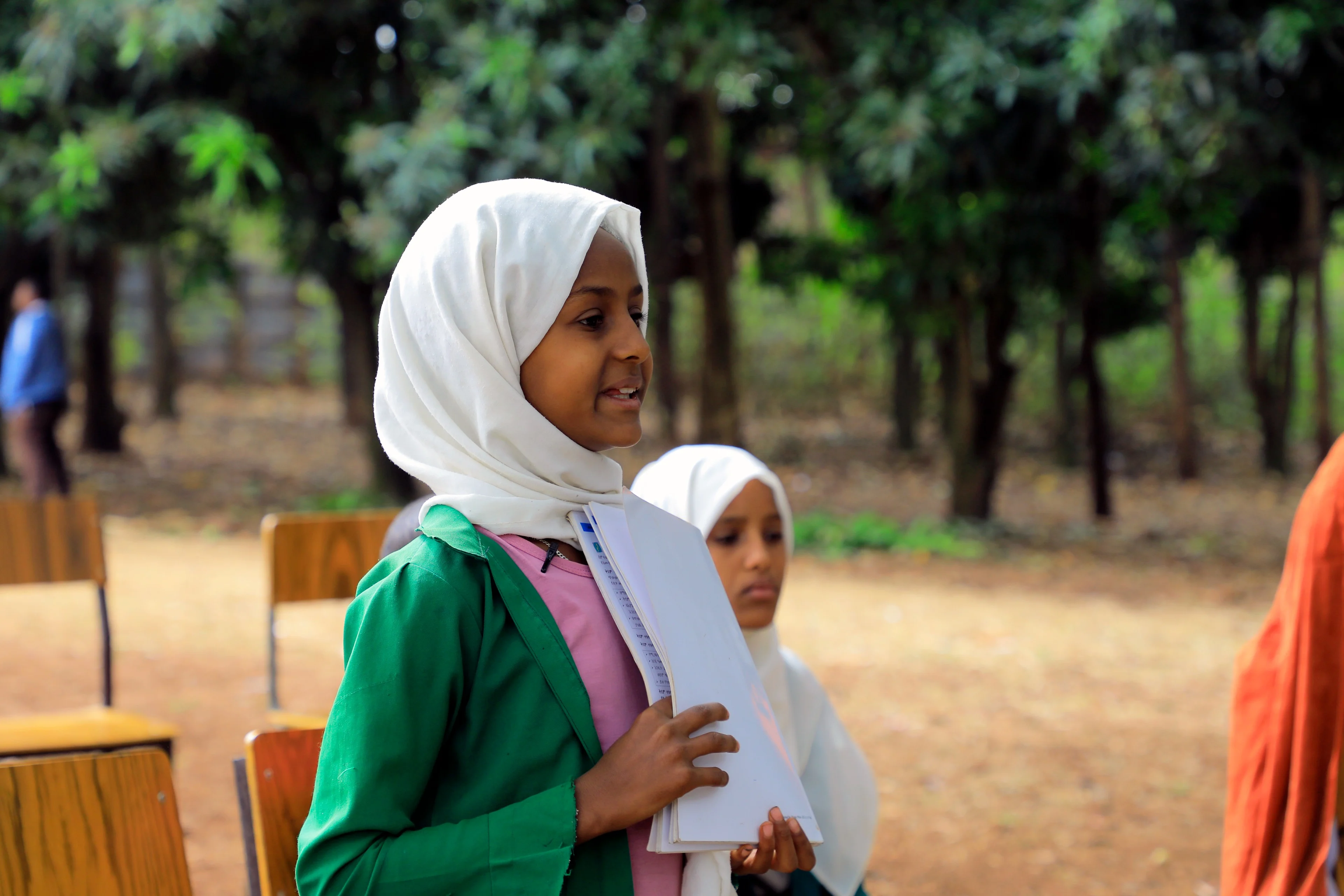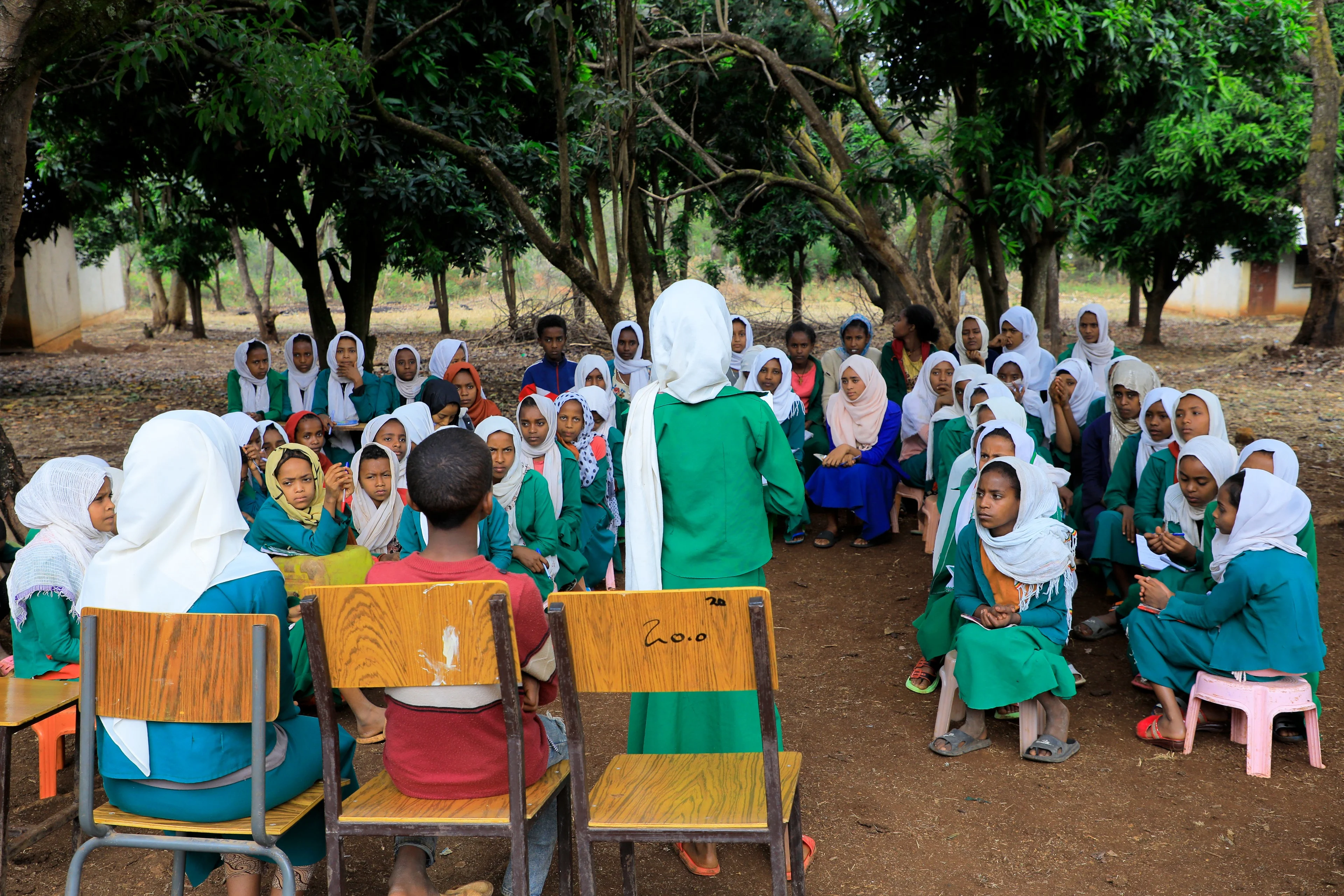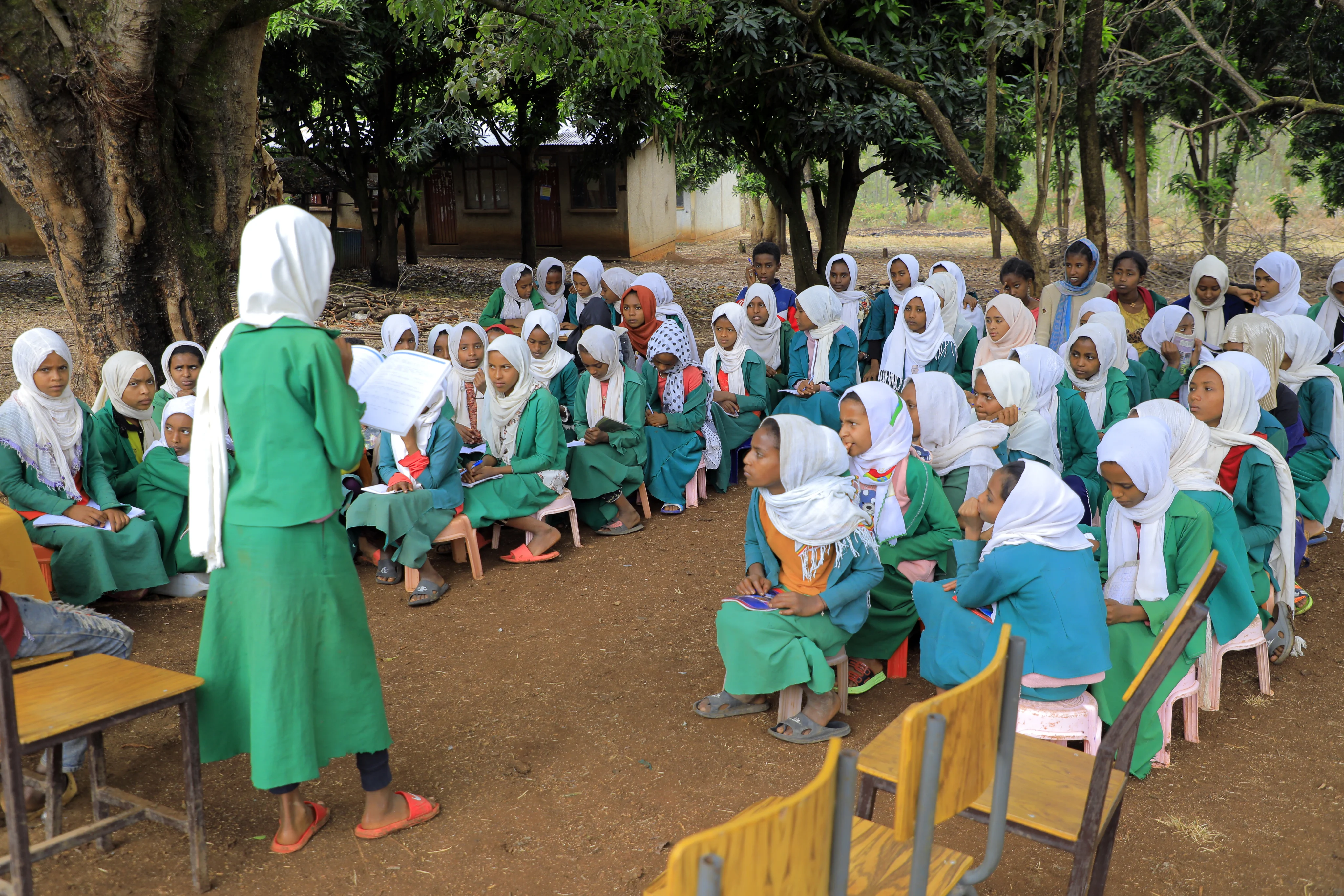Peer educators helping to end child marriage
“Girls face various problems because of the communities attitude toward gender equality and child marriage.”
- Fethia, 13 years old, Ethiopia

When it comes to reducing the prevalence of child marriage, Ethiopia has seen significant progress in recent decades - between the 1980’s and 2015, the percentage of girls married by the age of 18 has fallen from 75 percent to 40 percent - but the current drought is derailing efforts to end the practice.
When food is scarce, the risk of child marriage increases. Desperate parents, struggling to provide for their children, often see the dowry paid by the husband’s family as a way to ease the burden on their own family.
13-year old Fethia is a grade seven student in Ethiopia’s Amhara region, where the rate of child marriage is five times that of the capital city. Plan International has been working with girls in Amhara and Sidama regions to increase their access to sexual and reproductive health services and enable them to make their own decisions about when and who to marry.
As a peer educator with Plan International’s ‘My Choice for My Life’ project, Fethia leads discussions at her school on topics including gender equality, child marriage and sexual reproductive health. The five-year project supports gender equality, adolescent sexual and reproductive health rights and child protection by engaging adolescent girls and women to become Champions of Change and working with boys and men to become partners of change.
“Girls face various problems because of the communities attitude toward gender equality and child marriage,” shares Fethia.
“A lot of girls dropout of high school because they are pressured into getting married. When girls are married off at an early age they are exposed to sexual and reproductive health issues. I personally know a girl who struggled with health issues as a result of her early marriage and childbirth.
“Girls in our community are expected to do all the housework. They mainly spend their time fetching water, cleaning the house and cooking meals. Because they don't have many domestic duties, boys spend their free time in the town.
“There has been a noticeable difference in the community since the My Choice for My Life project began. Today, a lot of parents give both girls and boys equal opportunities. For instance, my parents treat my brother and me equally and we both do household tasks. My brother cleans the house as I make breakfast."

“Due to the peer-to-peer sessions we facilitate, child marriage is declining at our school.
In the past, more than 20 students would drop out of school each year due to early marriage, but now relatively few students do so. Every time we hold a meeting, students are excited and eager to take part.
“Girls today feel able to talk about themselves or whatever challenges they may be experiencing. If their parents are pressuring them into getting married, they tell us, the facilitators, or their teachers. We all know that forcing girls into marriage against their will is illegal and punishable by law, so if, for instance, my parents decide to push me into a marriage with someone else, I will know where to complain and what steps to take.
“In our school, we have regular discussions about early marriage, sexual and reproductive health, and gender equality. We learn a lot from these conversations, and both my friends and I have changed our attitudes as a result.”

You can help girls free themselves from child marriage.
Your support will help:
- train case workers who can intervene in suspected cases of forced child marriage
- create safe spaces, education and support networks so girls are supported to refuse marriage and build their own lives
- provide medical treatment and counselling to help girls recover from child marriages
- boost Plan International’s bold 5-year campaign to end forced and child marriage in the Asia-Pacific region.

